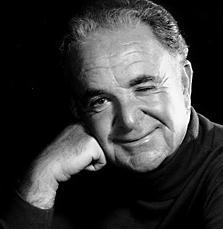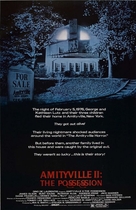Our editor-in-chief Nate Yapp is proud to have contributed to the new book Hidden Horror: A Celebration of 101 Underrated and Overlooked Fright Flicks, edited by Aaron Christensen. Another contributors include Anthony Timpone, B.J. Colangelo, Dave Alexander, Classic-Horror.com's own Robert C. Ring and John W. Bowen. Pick up a copy today from Amazon.com!
Al Feldstein Interview
Being one of those immature people who still read Mad Magazine, this interview was a pleasure for me. However, from a horror buff point of view, this man is important to our genre because he helped create perhaps the most successful horror comic book in history, Tales From the Crypt. I caught up with him via Internet, and he gave the readers of classic horror a very “MAD” chat about all things from the Crypt.
Classic-Horror: How did you get into art as a living?
Al Feldstein: I was attending the High School of Music and Art in New York City, planning to be an Art Teacher. It was during the Depression, and my folks could hardly afford to give me the money for subway fare to the school, no less give me an allowance for dates, etc. So I had to earn money after school in various jobs (for example, I was a Pin Boy in a bowling alley...which was before they had automatic pin-setters).
One day, I heard about another art student at the school who was making fantastic money (fantastic, from my point of view!) doing free-lance Comic Book Art (for $20 a page!!!). I had never read a comic book. Who had the dime?! But I borrowed some comic books, created a portfolio of sample comic book pages and made the rounds of the Comic Book Publishers.
And I was turned down everywhere as not being "professional" enough for their needs.
Then, one kind Editor recommended to me that I try to get a job as an Apprentice at an Art Studio he knew of that was servicing the Comic Book Industry.
So I went to the studio...and I was hired!!... as a "gofer"!... running errands, erasing pages and doing general gofer work...after school...for three dollars a week (later raised to five...then twelve over the Summer, full time!).
The studio operated like an assembly line...and had some of the finest artists in the business working there, talents like Lou Fine, Reed Crandall, Mort Lev, Jack Kamen, Raphael Asterita, Bill Williams, Bob Webb, Alex Blum, etc, etc.
It was there (at the Iger Studio) that I began to learn to do Comic Book Art...first, by inking backgrounds...then penciling and inking backgrounds...then inking figures penciled by others...then penciling and inking figures...and finally doing whole pages from beginning to end.
CH: What do you consider your first "big break"?
AF: After I was discharged from Service in World War II, I returned to the Iger Studio while awaiting admission to Columbia University under the G.I. bill, planning to continue my "Education" courses necessary for my Teaching Degree...and I was almost immediately making more money than a starting Art Teacher.
I had been married while in Service and my wife wanted to start a family...so I gave up my hopes of becoming an Art Teacher...and continued working at Iger's. And I began to realize that, while I was being paid $75.00 a week, I was turning out at least a page and a half a day of comic book art...which Mr. Iger was selling for $35.00 a page to the Comic Book Publishers he was servicing. Which meant that if I struck out on my own and started "free-lancing"...all I needed to do was three pages (two day's work!) a week to make more than I was making at Iger's. So I quit.
I started free-lancing for various Publishers...doing whatever I was assigned, and eventually specializing in "Teenage Comic Book" art. My big break came when I visited Fox Publications with my portfolio, and they were looking for someone to package a "Teenage" comic book for them. They liked the art that they saw, but they wanted someone to do the entire package...art and writing. So I lied.
I told them that my wife was a writer and we could do the job as a team. I ended up doing three "Teenage" books for Victor Fox...which, of course, I wrote as well as drew: "Junior," "Sunny" and "Corliss Archer"
CH: How did you hook up with E.C. Comics?
AF: Bill Gaines's father, Max Gaines (who invented the Comic Book ...was a partner of the DC/Superman people... had sold out to them...and had started Educational Comics) had been killed in a tragic speedboat accident on Lake Placid, where the family had a Summer home...and Bill's mother was insisting that he take over the business.
His father's Business Manager, Sol Cohen, invited me down to their offices...because he wanted me to meet Bill and to talk about doing a "Teenage" book for them. Bill and I hit it off immediately, and we signed a contract for me to do "Going Steady With Peggy"...which we later mutually agreed to tear up when the "Teenage" market crashed while I was working on the first story for the first issue.
And that was the start of my 38-year association with E.C.
CH: What intrigued you to take the job at TALES FROM THE CRYPT?
AF: Let's get the facts straight. After working for E.C., doing "Crime" stories for their "Crime" titles, "Western" stories and "Romance" stories (script and art!)...I began to urge Bill to stop being a "Follower" and an "Imitator"...and start being an "Innovator"...because the imitations fell by the wayside when a "trend" collapsed, but the "originals" survived.
We talked about our mutual love of Horror Movies and scary Radio Shows like "The Witch's Tale" and "Lights Out" and "Inner Sanctum"...and I urged him to start publishing "Horror" stories in comics. He agreed to try it out, as an experiment, in his two "Crime" books: "Crime Patrol" and "War Against Crime". So I created "The CryptKeeper" and "The VaultKeeper" for each title...and we were on our way.
CH: Do you have a favorite issue of TALES FROM THE CRYPT?
AF: Each one that I wrote was my favorite at the time.
CH: What other E.C. Comics did you work on?
AF: After our "experiment" proved successful, The CryptKeeper was given his own title, "The Crypt of Terror" (later changed to "Tales From The Crypt")...The VaultKeeper was given his own title, "The Vault of Horror"..and a third character I created, "The Old Witch," was given hers: "The Haunt of Fear"...
...Bill confessed his love for "Science Fiction"...something I had never read. So he gave me a few copies of John Campbell's pulp magazine, "Astounding Science Fiction" and asked me to read them and see if I thought I could create "science fiction" titles for him. Which I did......and we published "Weird Science" and "Weird Fantasy"!
After that came our two "crime/suspense" titles. "Crime SuspenStories" and "Shock SuspenStories".
CH: What is your opinion of the TALES FROM THE CRYPT movie (original with Peter Cushing)?
AF: For its time (a time of censorship and caution), the adaptations of my stories into the movie were done, I thought, quite well. But I hated the "host" that introduced them...their sterile version of "The CryptKeeper"!
CH: Where you consulted on the television show at all?
AF: No! When Bill Gaines finally came to realize my real reasons for leaving MAD at the end of 1984, he started to cut me out of the history of E.C. ... and MAD! Not only was I not consulted...I didn't even get screen credits for all of my stories that they adapted. Bill saw to that.
CH: How did you get the position as editor of MAD Magazine?
AF: After E.C. was effectively put out of business by The Comic Book Code Authority, which followed the Senate Investigation into Juvenile Delinquency, in 1955...all that Bill Gaines had left was "MAD"...edited by Harvey Kurtzman.
Harvey (because he had been offered to do a lush MAD-type magazine for Playboy's Hugh Heffner) demanded 51% control of the magazine. This, I believe, was actually a ploy to get himself fired, because he didn't have the guts to quit (after talking Bill and his Mother into financing the continuation of MAD). So Bill did exactly that. He fired Harvey... and re-hired me...as the editor of MAD.
CH: Who is your favorite MAD artist/writer?
AF: When Harvey Kurtzman left MAD, he took the entire staff with him...except for Wally Wood and MAD's Art Director, John Putnam.
Taking over the Editorship, I was forced to immediately gather an entirely new staff of MAD artists and writers...and each one of those talented guys were my favorites.
Or else I wouldn't have hired them.
CH: What made you decide to leave MAD?
AF: Bill Gaines had sold MAD Magazine for five million dollars early on...back in 1960 (or thereabouts) and had been paid off quickly as MAD sales, under my auspices, had skyrocketed from 375,000 quarterly to a high of 2,800,000 eight times a year.
So he had no real desire to see MAD turned into an a bustling expanded "industry".
I, on the other hand, over the years, was constantly pushing for ways to modernize and publicize the magazine...to bring it into the 80's, the 90's and the 21st Century...with detailed proposals for: a MAD TV Show (25 years ago, before "Saturday Night Live"), accepting "Real {but humorous} Ads" (that would be created especially for the magazine by the "MAD Advertising Agency"), so that we could have Full-Color inside the magazine, a "live" and "animated" VHS version of MAD (today, it would be on CD!) that would be sold on newsstands and in TV Rental Stores, etc., etc., etc.
But Bill Gaines was having no part of my ambitions for the magazine.
That was back when MAD was selling over a quarter of a million copies per issue, eight times a year.
Today, twenty-five years later (and after the death of Bill Gaines), many of those suggestions have finally come to pass. But it is too late! The magazine now sells barely 275,000 copies. They've closed the barn doors...but well after the horses have gone!
CH: What are you working on now?
AF: Since my retirement, I have returned to my first love: Fine Art. I do Landscapes, Wildlife and Western paintings. I also do "Cover-Revisted" paintings of my old E.C. Science-Fiction, Horror and Crime covers...for collectors.
You can view my current Fine Art by visiting my Online Gallery web site at:
http://www.alfeldstein.com
CH: What advice would you give young people trying to break into the comic book business?
AF: Go elsewhere with your art (and writing) talents. Find more lucrative mediums. The Comic Book is like a buggy whip in an age of automobiles. It is a dying business.
Apply your talents to the electronic and modern mediums that are replacing it. Television, Computer Art, Computer Games and Special Effects, Animated Movies, etc., etc.
Join the 21st Century.
Classic-Horror would like to thank Al, for taking time out of his busy schedule to give us this interview. He had an incredible career and we enjoyed hearing from him! Good luck, Al!








